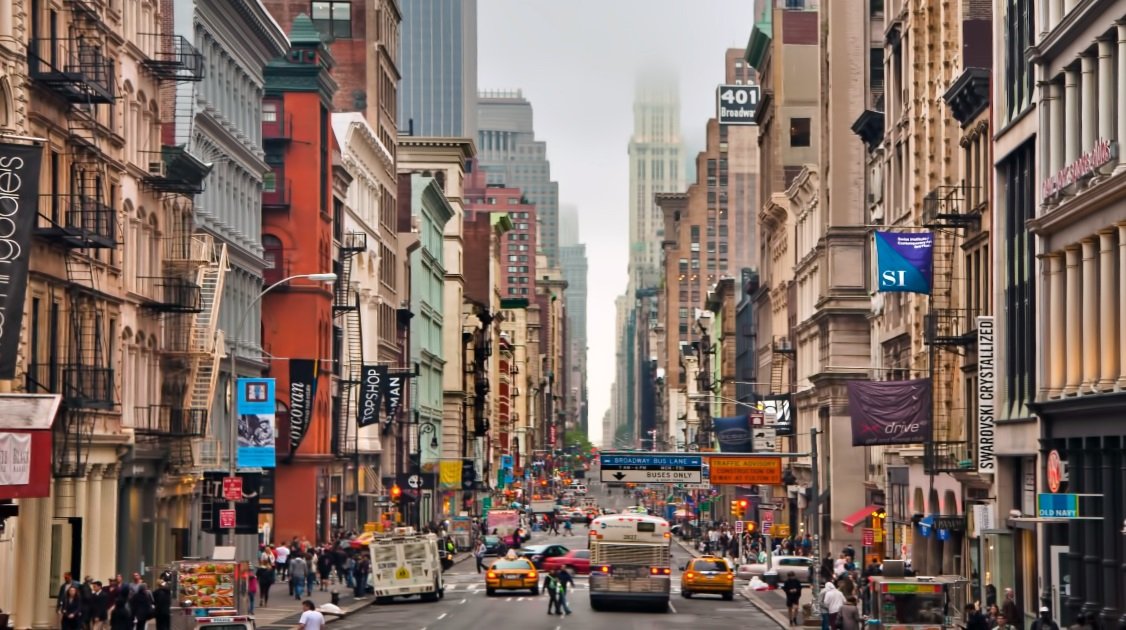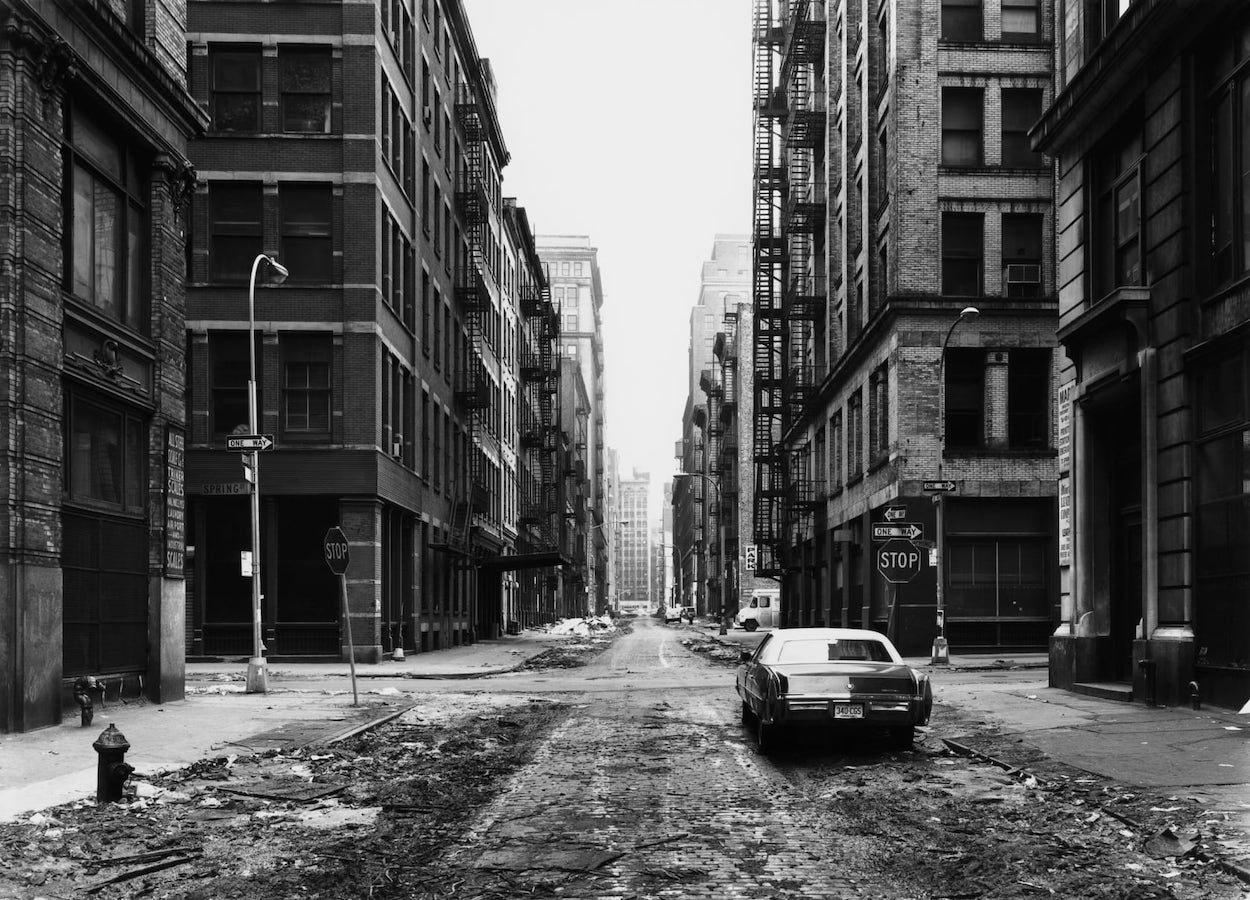The 100-acre swath of Manhattan bounded by Houston Street, Crosby Street, Canal Street, and Sixth Avenue, colloquially known as SoHo, emerged as a tony commercial and entertainment district by the mid-19th century, with department stores, grand hotels, and theaters congregating in Broadway’s newly erected cast iron buildings. Brothels soon popped up nearby, alienating businesses and attracting small manufacturing plants—especially textiles—in their stead. As the city center moved uptown and textile firms relocated to the South, SoHo’s industrial activity dwindled, its buildings sitting unoccupied and dilapidated.
By the 1950s, the area became not-so-affectionately known as Hell’s Hundred Acres—a fire-prone industrial wasteland full of sweatshops and warehouses that was virtually deserted at night. As a way to remove the blight, urban planner Robert Moses submitted controversial plans for an elevated highway—the Lower Manhattan Expressway—to slice the neighborhood in half and connect Brooklyn to New Jersey. His proposal was revoked, largely thanks to the advocacy of urban theorist Jane Jacobs, and SoHo was spared the wrecking ball.
Shortly after the fracas, artists started moving in, wooed by low rents, high ceilings, and cavernous interiors. At the time, the city was teetering on the brink of economic collapse and afflicted with record crime rates. SoHo was still gaining steam as an artist enclave—Andy Warhol, Gordon Matta-Clark, Louise Bourgeois, Sol LeWitt, and Jean-Michel Basquiat all frequented the area—but city officials sought to preserve the area as an industrial base.
The architect and Cooper Union alum Bernard Marson, who worked alongside Marcel Breuer during the construction of the Whitney Museum of American Art on the Upper East Side, was keeping tabs on SoHo’s transition and purchased several former industrial buildings, including Ernest Flagg’s 12-story Little Singer Building and a former glue factory. He discovered a loophole in the city’s zoning regulations that allowed for “studios with accessory living” in manufacturing districts, thus absolving the artists who illegally settled there and paving the way for more to join.
Faced with the new realities of the real estate market, New York State passed the 1982 Loft Law, which required landlords to bring buildings up to livable standards, protected artists from eviction, and provided rent stabilization. “Mr. Marson was responsible almost single-handedly for the growth of New York City’s SoHo into an artist community and historic district,” Raquel Ramati, who headed the Urban Design Group in Mayor John V. Lindsay’s administration, said when endorsing him for an American Institute of Architects fellowship.
SoHo soon started attracting more affluent residents, enamored with loft living, elegant cast-iron facades, side streets lined with Belgian blocks, and its reputation as a haven for artists. The new money lured high-end fashion boutiques and caused real estate prices to surge—a pattern of gentrification now known as the “SoHo Effect.” Its reputation as an artistic enclave may have since waned, but many artists have stayed put for decades despite the city’s gallery scene having mostly relocated to Chelsea. Developers elsewhere have since attempted to replicate the “SoHo Effect” to spur gentrification, but SoHo’s revival was largely the product of a distinct time and place. Marson, it seems, captured lightning in a bottle.


